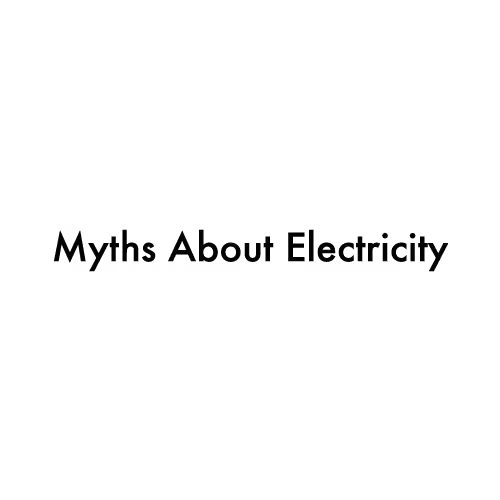Electricity is a vital part of modern life, yet many myths persist about how it works and how to stay safe. Some of these myths stem from outdated beliefs, while others are simply misunderstandings. Let’s explore some common myths about electricity, determine whether they’re true or false, and uncover their origins.
Myth 1: Rubber Shoes Make You Immune to Electric Shocks
Verdict: False
Rubber is a poor conductor of electricity, but regular rubber-soled shoes don’t provide enough insulation to protect you from high-voltage shocks. Industrial-grade rubber designed for electrical insulation is entirely different. Myths such as this one likely arose because rubber does have insulating properties, but the level of protection depends on the quality and type of rubber.
Myth 2: Lightning Never Strikes the Same Place Twice
Verdict: False
Lightning often strikes the same place multiple times, especially tall or conductive structures like skyscrapers and lightning rods. This myth might have originated from a misunderstanding of how lightning works, or it could simply be an old saying used metaphorically to mean unlikely events don’t happen twice.
Myth 3: Power Lines Are Insulated
Verdict: Partially True
While some power lines are insulated, many are not, especially high-voltage transmission lines. Even insulated lines can degrade over time. This misconception may come from the assumption that all electrical wires have the same protective coverings as household wiring.
Myth 4: You Can Save Energy by Leaving Lights On
Verdict: False
The idea that turning lights on and off uses more energy than leaving them on is a persistent myth. Modern light bulbs, including LEDs, consume minimal energy when turned on, so turning them off when not in use is the best way to save energy. This belief likely dates back to older, less efficient incandescent bulbs.
Myth 5: Electricity Always Takes the Path of Least Resistance
Verdict: Partially True
Electricity takes all available paths, not just the one with the least resistance. It will distribute itself across multiple paths depending on the resistances involved. The simplification of this concept into “least resistance” likely led to the myth.
Myth 6: It’s Safe to Use Appliances During a Thunderstorm
Verdict: False
Using electrical appliances during a thunderstorm can be dangerous. Lightning can cause power surges that travel through wiring and damage appliances or even cause harm. This myth might stem from a lack of understanding of how lightning interacts with household electrical systems.
Myth 7: Low-Voltage Electricity Can’t Hurt You
Verdict: False
Even low-voltage electricity can be dangerous under certain circumstances. The amount of current (measured in amps), not just the voltage, determines the potential harm. This myth likely comes from the assumption that lower voltage equals lower risk, which isn’t always the case.
Why Do These Myths Persist?
- Lack of Education: Many people don’t have a deep understanding of electrical systems.
- Historical Context: Myths often have roots in outdated technologies or beliefs.
- Simplified Explanations: Complex concepts are often oversimplified for general understanding, leading to inaccuracies.
The Bottom Line
Understanding the facts about electricity is essential for safety and efficiency. If you have questions about electrical safety or your home’s wiring, consult a licensed electrician to get accurate information and stay protected.
*Go back to Point B Electrical Services home page…
*Discover the latest updates, promotions, and expert electrical tips by visiting Point B Electrical Services Facebook page today!


